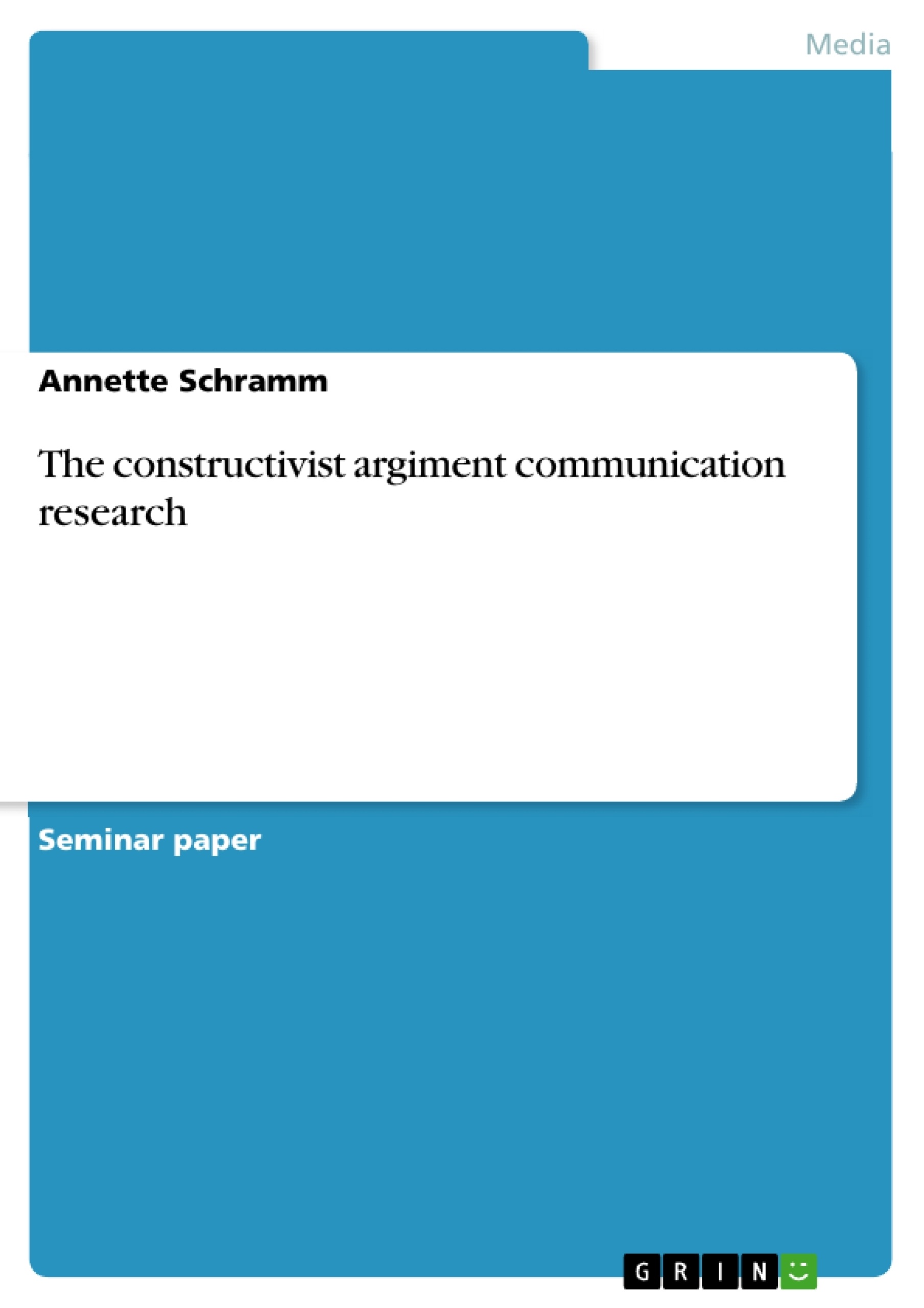I want to start this essay with a very personal experience of constructivism. Once, when I was a teenage girl, I stand in front of a mirror (as girls do often), and suddenly asked myself: Who can tell me actually, that is me, I see in the mirror? Couldn’t it be, that it is only me who can see me in this mirror in this manner? Is it possible, that the mirror lies? Actually, I had discovered the closeness of perception. Then my sister arrived, I looked at her and concurrently at the image of her in the mirror. I had to realize, they are looking identically. My conclusion was, that it must be similar for her perception of me: I had discovered second order observation. Actually, every human being may have asked similar questions once in his life. But for most people reality and acting in this reality, tasting, smelling, seeing, talking, working are self-evident. Luckmann and Berger described impressively this way of understanding and interaction in every days life in the first chapter of their book about societal construction of reality (Berger & Luckmann, 1997). The question of reality and reality perception is not new in history. The cave allegory of Plato is probably one of the oldest illustrations of this question. Some constructivist researchers name a long and prominent series of ,constructivist’ thinkers in history. From Demokrit to ancient scepticism, from Descartes to Kant: Many philosophers dealt with the question of reality perception and objectivity. The answers were different, the consequences of this answers even more (von Glasersfeld, 1985). With establishing as discipline, this question became also relevant for communication science. Already Walter Lippmann realized, that our way of thinking about reality cannot be objective: „We shall assume that what each man does is based not on direct and certain knowledge but on pictures made by himself or given to him.“ (Lippmann, 1949, S.16). To shape the development and influence of constructivism in communication science, we will begin with the roots in natural science and humanities, followed by general assumptions. To enter into constructivist thinking in detail, it is necessary to present and explain the basic elements and terms, which are the precondition for applying constructivism for communication related issues. This part is mainly based on Niklas Luhmann’s system-theoretic concept.
Table of Contents
- Introduction
- The roots
- Development of constructivist thinking
- Natural science
- Humanities
- What is constructivist thinking?
- Development of constructivist thinking
- Basic elements of constructivist thinking
- System-Theory
- Cognition and Construction
- Communication
- Developing constructivism in communication science
- ,,Die Konstruktion der Realität in den Nachrichtenmedien"
- „Making News”
- Establishing constructivism
- The constructivist community
- A modell of constructing reality
- Research areas and application
- Constructivism and the role of the mass media
- Journalism
- The question of Objectivity
- Journalism as social system
- Media-schemata
- Effect research
- Criticism
- Conclusions
Objectives and Key Themes
The seminar-thesis "The constructivist argument in communication research" aims to explore the development and application of constructivist thinking in communication science. It focuses on understanding how constructivism challenges traditional notions of objectivity and reality perception, particularly within the context of mass media.
- The evolution of constructivist thought in various disciplines, particularly natural science and humanities.
- Key elements of constructivist thinking, including system theory, cognition, and communication.
- The application of constructivist principles to news production and the role of mass media in shaping our understanding of reality.
- The influence of media schemata and the impact of media on audience perception.
- Criticisms of constructivist theory in communication research.
Chapter Summaries
- Introduction: The introductory chapter sets the stage by presenting a personal anecdote illustrating the concept of constructivism and its relevance in understanding reality perception. It also briefly examines the historical context of questioning reality and its connection to communication science.
- The roots: This chapter traces the origins of constructivist thinking in both natural science and the humanities. It highlights key figures like Humberto Maturana, Francisco Varela, Gerhard Roth, and Ernst von Glasersfeld, emphasizing their contributions to the development of constructivist thought.
- Basic elements of constructivist thinking: This section explores the foundational principles of constructivism, including system theory, cognition, and communication. It utilizes Niklas Luhmann's system-theoretic framework to analyze how reality is constructed within these frameworks.
- Developing constructivism in communication science: This chapter focuses on the emergence of constructivist thinking within communication science, particularly through the work of Winfried Schulz and Gaye Tuchman. It examines their studies on news production and the influence of media on reality construction.
- Establishing constructivism: This section delves into the established constructivist community and its contributions to the discourse on media and reality perception. It explores a model of reality construction and the application of constructivist principles in communication research.
- Research areas and application: This chapter examines the application of constructivism in specific areas of communication research, including journalism, media schemata, and effect research. It explores the implications of constructivism for understanding the role of mass media in shaping our understanding of reality.
Keywords
Constructivism, communication research, reality perception, mass media, system theory, cognition, communication, objectivity, news production, media schemata, effect research, journalism, social system, criticism.
- Arbeit zitieren
- Annette Schramm (Autor:in), 2006, The constructivist argiment communication research, München, GRIN Verlag, https://www.hausarbeiten.de/document/60077


